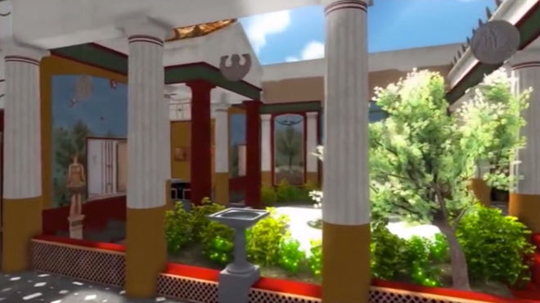London, Oct 10: Researchers have used 3D technology to reconstruct a house in Pompeii to show what life may have been like for the people of the ancient Roman city about 2,000 years ago.

By combining traditional archaeology with 3D technology, researchers at Lund University in Sweden managed to reconstruct the house to its original state before the volcano eruption of Mount Vesuvius in AD 79.
In 1980, the Pompeii city curator invited the international research community to help document the ruin city, before the state of the finds from the volcano eruption would deteriorate even further.
The Swedish Pompeii Project was therefore started at the Swedish Institute in Rome in 2000.
The project now also includes a new branch of advanced digital archaeology, with 3D models demonstrating the completed photo documentation.
The city district was scanned during the field work in 2011–2012 and the first 3D models of the ruin city have now been completed.
The models show what life was like for the people of Pompeii before the volcano eruption of Mount Vesuvius. The researchers have even managed to complete a detailed reconstruction of a large house, belonging to a wealthy man.
"By combining new technology with more traditional methods, we can describe Pompeii in greater detail and more accurately than was previously possible," said Nicolo Dell Unto, digital archaeologist at Lund University.
Among other things, the researchers have uncovered floor surfaces from AD 79, performed detailed studies of the building development through history, cleaned and documented three large wealthy estates, a tavern, a laundry, a bakery and several gardens.
In one garden, they discovered that some of the taps to a stunning fountain were on at the time of eruption - the water was still gushing when the rain of ash and pumice fell over Pompeii.
The researchers occasionally also found completely untouched layers. In a shop were three, amazingly enough, intact windows (made out of translucent crystalline gypsum) from Ancient Rome, stacked against each other.
By studying the water and sewer systems they were able to interpret the social hierarchies at the time, and see how retailers and restaurants were dependent on large wealthy families for water, and how the conditions improved towards the end, before the eruption.
An aqueduct was built in Pompeii, enabling residents to no longer having to rely on a few deep wells or the tanks of collected rainwater in large wealthy households, researchers said.





Comments
Add new comment